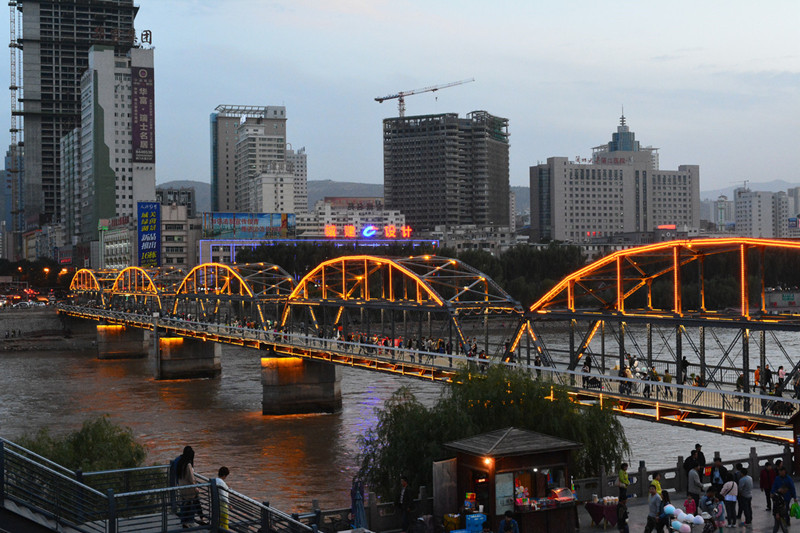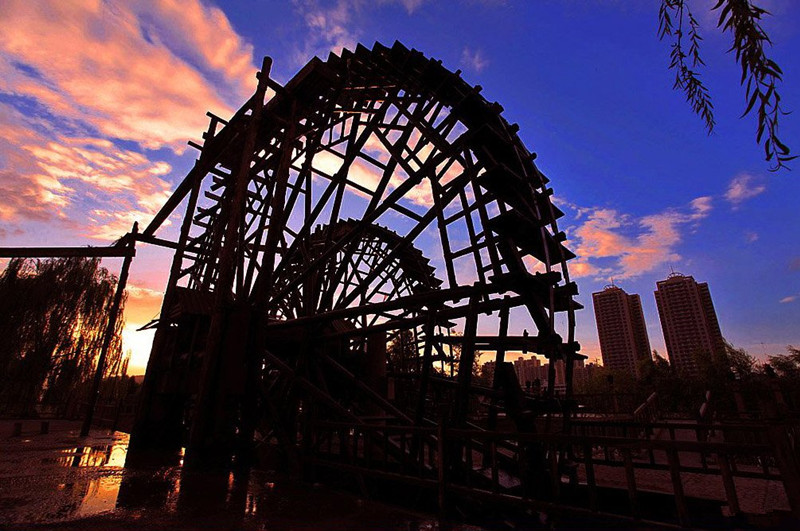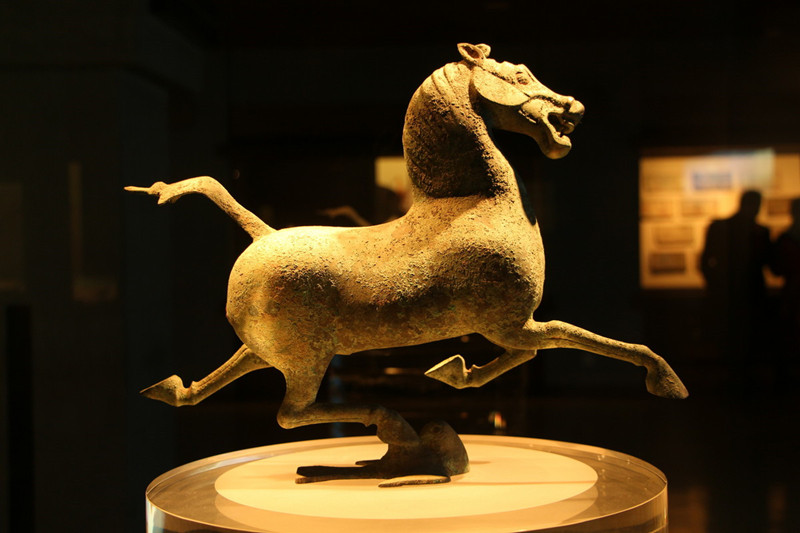How to Plan Lanzhou City Tour
symbol of China’s tourism, while historical relics like Hekou Ancient Town (河口古镇) and Jincheng Pass (金城关) recreate the charm of the Silk Road hub. Start your day with a bowl of “clear soup, white radish, red chili, green cilantro, and yellow noodles”—Lanzhou beef noodles (兰州牛肉面)—and explore the Zhengning Road Night Market (正宁路夜市) at night, savoring the smoky aroma of milk and egg rice wine alongside grilled lamb. Climb Xinglong Mountain (兴隆山) to admire lush green peaks or visit Shuimo Danxia (Ink-and-Wash Danxia, 水墨丹霞) to witness a “flowing ink painting” of colorful rock formations. With its blend of diverse cultures—from the solemnity of the XiGuan Mosque (西关清真大寺) to the vibrancy of intangible cultural heritage—Lanzhou captivates with its unique Northwestern charisma, making it a must-visit destination on the Silk Road journey.
1. Best Time to Visit Lanzhou? 🌤️
May to October offers mild days (11 °C–24 °C), moderate rain showers, and clear skies—ideal for sightseeing and outdoor activities . July–August bring hotter weather (up to 28 °C) and afternoon thunderstorms ⛈️, while December–February can dip below –4 °C ❄️ .
2. How Long Should I Stay? ⏳
A 3–4 day itinerary covers downtown highlights; extend to 5 days for nearby grottoes (Bingling Thousand-Buddha Caves) or monastery visits .
3. Must-See Attractions 🏛️
Iron Bridge of the Yellow River (黄河铁桥)
The Iron Bridge—also known as Zhongshan Bridge—is China’s first iron span across the Yellow River, built in 1909 and now reserved for pedestrians and cyclists .
By night, its illuminated arches cast colorful reflections on the river, creating one of Lanzhou’s most photographed vistas .

White Pagoda Mountain (白塔山)
White Pagoda Mountain rises to 1,720 m within the city limits, crowned by a Yuan-dynasty white pagoda and lush forest trails .
A cable car (¥45 one-way uphill, ¥55 round-trip) carries visitors to the summit for panoramic views of Lanzhou and the Yellow River .

Five Springs Park (五泉山公园)
Five Springs Park spans 266 400 m² at the north foot of Gaolan Mountain, named for its five natural springs that gush from the rock face .
Established in 1955, it remains Lanzhou’s largest urban park, featuring winding paths, artificial temples, and seasonal flower displays .

Waterwheel Garden (水车公园) & Expo Park
The Waterwheel Garden covers 55 900 m² on the river’s southern bank, showcasing restored Qing-era waterwheels that once irrigated Lanzhou’s farmlands .
Adjacent Waterwheel Expo Park extends the theme with interactive exhibits, restaurants, and craft shops along Nanbinhe East Road .

Yantan Park (雁滩公园)
Yantan Park, originally a cluster of eighteen sand islands, now features a central lake with boardwalks and traditional pavilions for serene riverside strolls .
Its landscaped gardens and water features make it a favorite spot for morning tai chi and weekend family outings .
Gansu Provincial Museum (甘肃省博物馆)
Housed in a modern complex, the museum’s three main halls—Buddhist Culture, Pottery, and Bronze Artifacts—trace Gansu’s Silk Road heritage .
Its crown exhibit, the “Bronze Horse Treading on a Flying Swallow,” is one of China’s most celebrated ancient sculptures .

Yellow River Scenic Belt (黄河风情线)
This expansive urban park corridor stretches along both banks of the river, combining 25 themed parks, sculptures, and riverside promenades .
Within it lie 22 historic bridges and 14 piers, including landmarks like the Zhongshan Bridge and the Mother Yellow River statue .
Zhengning Road Night Market (正宁路夜市)
Zhengning Road Night Market is Lanzhou’s premier evening food street, lined with over a hundred stalls serving halal barbecue, fermented rice drinks, and potato cakes
Highlights include the famed milk-egg fermented glutinous rice and cumin-spiced lamb skewers—must-try snacks for any visitor.
4. Best Way to Get Around 🚇
-
Metro 🚇: Two lines (Line 1 east–west; Line 2 north–south), fares ¥2–4 .
-
Buses 🚌: Extensive network, cash or mobile pay accepted .
-
Taxis & Didi 🚕: Starting fare ¥7 for 3 km, then ¥1.4/km .
-
River Cruises 🚢: Departure near Zhongshan (Iron) Bridge for Yellow River trips .
5. Local Cuisine 🍜
Lanzhou Beef Noodles (兰州牛肉面)
Often hailed as “China’s #1 Noodle,” this dish features hand-pulled “dragon whisker” noodles in a clear beef broth, garnished with white radish, chili oil, garlic sprouts, and cilantro. Its “one clear, two whites, three reds, four greens, five yellows” color scheme defines its iconic look and taste

Grey-Mung Bean Porridge (灰豆子)
Made from locally grown grey mung beans simmered with jujubes, ash lye, and rock sugar, this sweet, cooling porridge is both a dessert and a digestive aid—especially popular in summer when served chilled .
Rang Pi Zi – “Extra-Strong” & “Soft” Styles (酿皮子)
“Gao Dan” Rang Pi Zi (高担酿皮): The original “high-carried vendor” style, made without alkali, yielding a firmer, springier texture.
Traditional Rang Pi Zi: Steamed wheat flour sheets, cut into strips and dressed with chili oil, vinegar, sesame paste, garlic, and secret spices for a tangy-spicy bite.
Jiangshui Noodles (浆水面)
A hallmark of Gansu cuisine, these cold noodles swim in a sour, fermented vegetable juice broth, topped with fresh cilantro and garlic—offering a refreshing counterpoint to heavy meats.

Jingyuan Yellow Braised Lamb (靖远黄焖羊肉)
Originating in Jingyuan County, this protected-status dish braises mutton with local medicinal herbs and potatoes until tender. Its richly flavored gravy is often mopped up with steamed buns or dipped noodles.

Hand-Grasped Mutton (手抓羊肉)
Simply boiled free-range mutton, served hot alongside cumin, chili flakes, and shredded flatbread. The purity of the meat’s flavor shines through minimalist seasoning.

Huang Men Yang Rou – Yellow Braised Mutton (黄焖羊肉)
A sibling to Jingyuan’s version, this local Lanzhou specialty blends tender lamb, potatoes, and carrots in a lightly spiced yellow gravy—comfort food at its best.
Lily-Peach Pastries (百合桃)
Shaped like peaches and filled with lily bulbs, sour plums, and sweet bean paste, these traditional pastries combine mythology and medicinal benefits, reputed to aid digestion and calm the mind.
Milk-Egg Fermented Rice (牛奶鸡蛋醪糟)
A specialty sweet soup where fermented rice (liao-zao) is boiled with milk and whisked egg ribbons, then topped with raisins, goji berries, and peanuts—rich, tangy, and warming in cooler months.

Crispy Potato Chips (洋芋片)
Ultra-thin potato slices fried until golden and dusted with cumin-chili seasoning, these crunchy snacks are ubiquitous at street stalls and make a perfect accompaniment to cold ales
6. Weather Overview 🌦️
Lanzhou (兰州) lies in a semi‐arid continental zone, with cold, dry winters and hot summers marked by brief monsoonal rains. Annual temperature averages around 10 °C, and total precipitation is low (~300 mm), concentrated June–September. Due to its river‐valley setting at 1 600 m altitude, Lanzhou experiences significant diurnal temperature variation.
Climate Classification & Annual Averages
Lanzhou has a Köppen BSk (semi‐arid, cold) climate, bordering on Dwa (monsoon‐influenced humid continental). Annual mean temperature is ≈ 10.2 °C, with January averages of –3.5 °C and July highs around 26.7 °C . Total annual precipitation is ≈ 307 mm, over 70 % of which falls from June to September . Sunshine is abundant, with 2 350 hours of bright sun yearly .
Seasonal Characteristics
Winter (December–February) ❄️
Temperature: Mean –3.5 °C in January, with lows down to –15 °C on cold snaps .
Precipitation: Minimal (< 10 mm/month), mostly light snow or dry .
Conditions: Cold, windy, and very dry (relative humidity ~40 %) .
Spring (March–May) 🌱
Temperature: Rises from 6 °C in March to 18 °C in May .
Precipitation: Light showers begin in May (~30 mm) .
Conditions: Windy “dust season” in March–April due to northerly gales; blooming trees by late April .
Summer (June–August) 🌞
Temperature: Averages 24–27 °C; peak days can exceed 32 °C .
Precipitation: Heavy rains arrive June–July (~100 mm/month), with thunderstorms .
Conditions: Humidity rises (up to 65 %), but rains are brief; lush greenery along riverbanks .
Autumn (September–November) 🍂
Temperature: Falls from 20 °C in September to 2 °C in November .
Precipitation: Drops sharply after September (< 20 mm/month) .
Conditions: Clear skies, crisp air, and vibrant foliage—ideal for sightseeing .
Notable Climatic Features
Diurnal Range: Average temperature swing of 15–20 °C between day and night, especially in spring and autumn .
Wind Patterns: Frequent spring dust storms; summer monsoon peaks in July; winter westerlies bring cold spells .
Sunshine: Over 300 sunny days per year, making Lanzhou one of China’s sunniest major cities .
Key Takeaway: Lanzhou’s semi‐arid continental climate rewards visitors with abundant sunshine and clear skies for most of the year but demands preparation for cold, dry winters and hot, storm‐prone summers, as well as significant daily temperature swings.
7. Altitude 📏
Lanzhou sits at approximately 1 600 m above sea level, nestled in a narrow river valley amid mountains .
8. Packing Tips 🎒
-
Layers 👕🧥: T-shirts, long sleeves, warm jacket for evenings.
-
Sun Protection 🕶️🧢: Sunglasses, hat, sunscreen for high UV.
-
Footwear 👟: Comfortable shoes for uneven streets and trails.
-
Rain Gear ☔: Lightweight poncho or umbrella in summer.
-
Essentials 🔌: Power bank, travel adapter, photocopies of documents.
-
Seasonal Extras 🧤🧣: Gloves and scarf in winter; moisture-wicking fabrics in summer .












